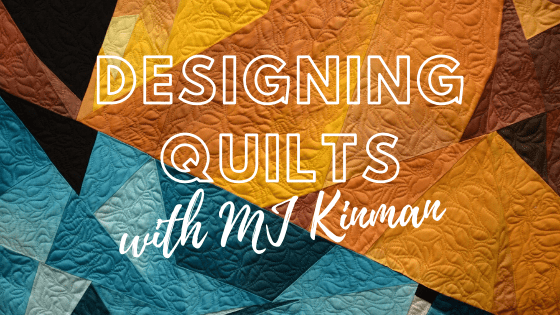
Designing Quilts that Look Like Gems with MJ Kinman
Designing Quilts for Quilts that Glow
by MJ Kinman
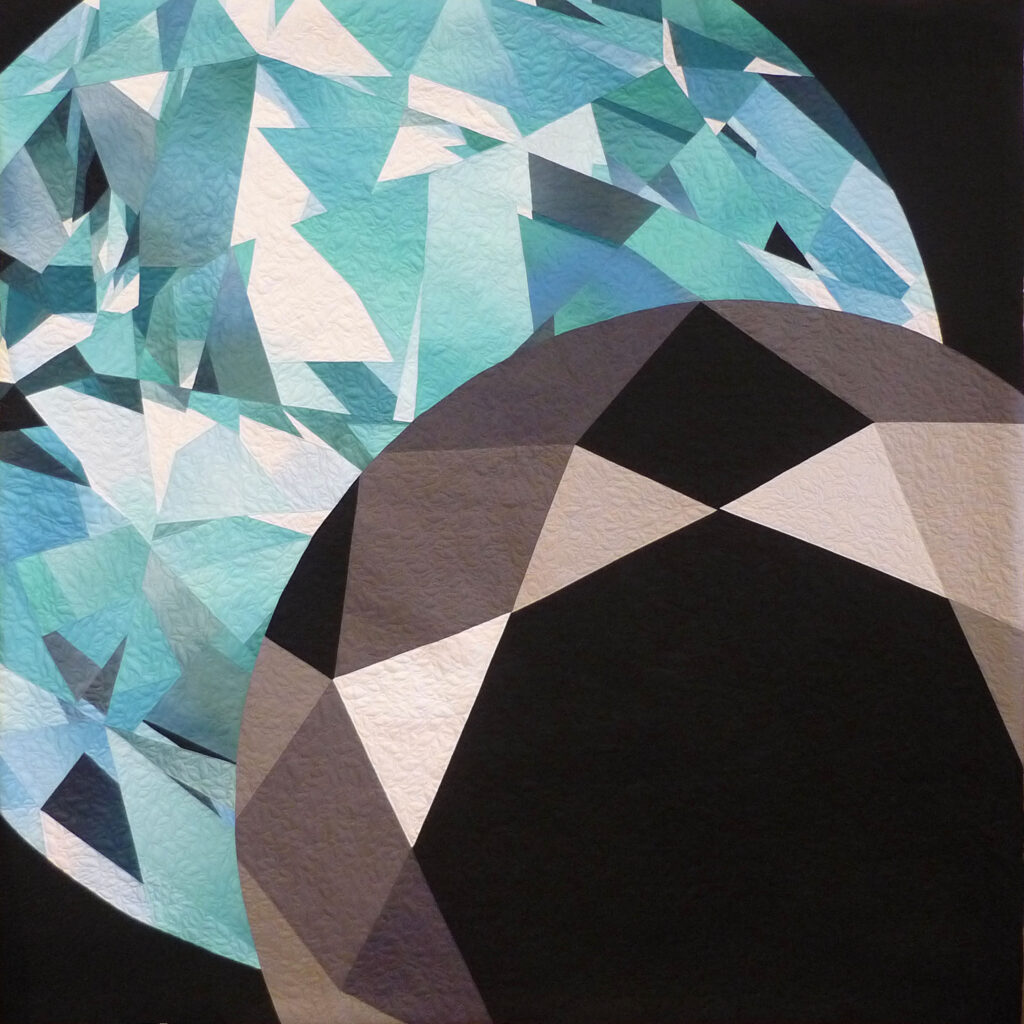
MJ Kinman is a textile artist with a passion for designing quilts that resemble gems. Her Diamond Diva quilt kits and Birthstone Gem quilt kits allow you to create your own gems with easy-to-follow directions and piecing templates. To celebrate National Quilting Month, MJ talks all about designing quilts, creating quilts and why she quilts with Sulky 40 wt. rayon thread.
DESIGNING QUILTS
I like to tell people that I make the biggest diamonds in the world. But instead of using the hardest substances on earth, I use the softest – cloth. I love everything about designing quilts and creating my giant gem quilts: searching for the perfect stone to use as inspiration, charting the faceting pattern onto freezer paper, and piecing the facets together.
However, the last step – covering the gem in my “wild-motion” machine quilting stitches – is perhaps my favorite. At this point, I love watching Sulky’s luminous 40 wt. rayon thread fill each facet while I relax into the quilting.

Relax into the quilting?! For some people, quilting is the most stressful of all the tasks involved in making a quilt. Many quilting designs demand precision, precisely because of how visible those stitches are on the surface of a quilt. But not for me.
Because I use a quilting design that is random, non-directional, and non-representational, I don’t have to worry about precision. The more random the pattern, the better. Randomness creates sameness. And sameness creates a screen-like effect that allows the viewer’s eye to move through the quilting and focus immediately on the flow of light and color in my gems. It’s almost as though I want my quilting to fade into the background, allowing the color and piecing to take center stage.
QUILTING THREAD
One of the questions I’m most often asked is whether I change thread color from facet to facet. The answer is “Yes, because I want the quilting to disappear into the gem.” However, I’ve discovered that Sulky’s gorgeous 40 wt. rayon is a bit of a chameleon! One color of thread can mimic slight differences in value. And regarding color choice, I try to use a color that is the same or slightly lighter than the fabric I’m working on. Because Sulky 40 wt. rayon comes in what seems to be a gazillion colors, I never have trouble finding the right one.
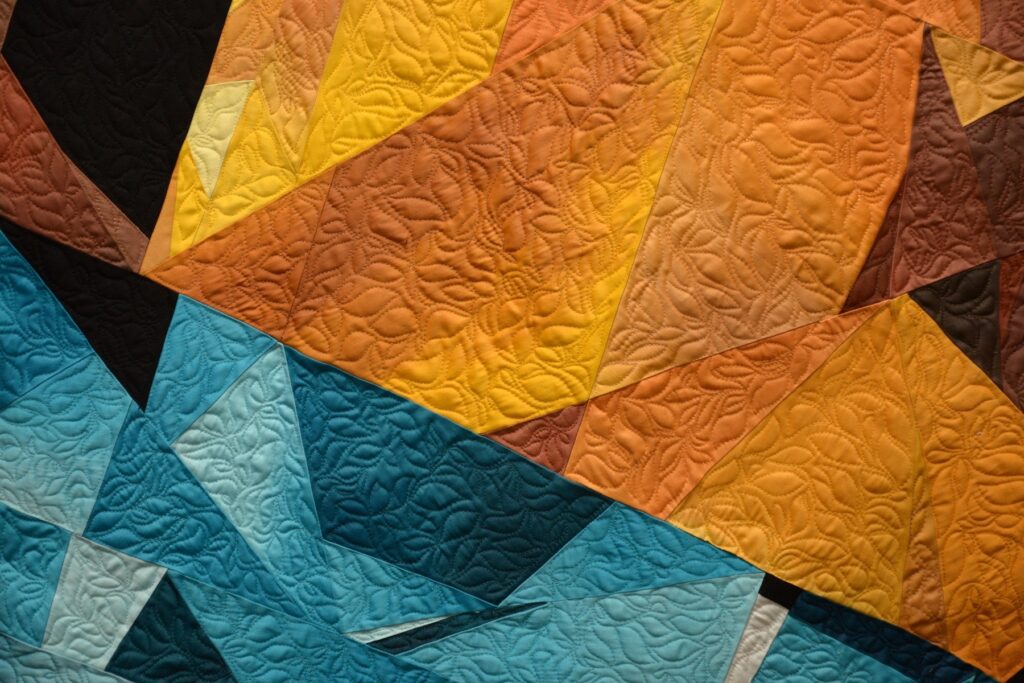
A secondary benefit to this type of quilting is that it gobbles up slack that sometimes occurs when you piece together oddly shaped blocks. The result: a thin, flat quilt that hangs beautifully on the wall.
My favorite quilting design is a flame shape. It tucks nicely into the sharp corners of my gemstone facets and lets me easily cross a line of stitching to move in a new direction. The diagram below shows how the variable shapes can be easily manipulated to nest one next to the other.
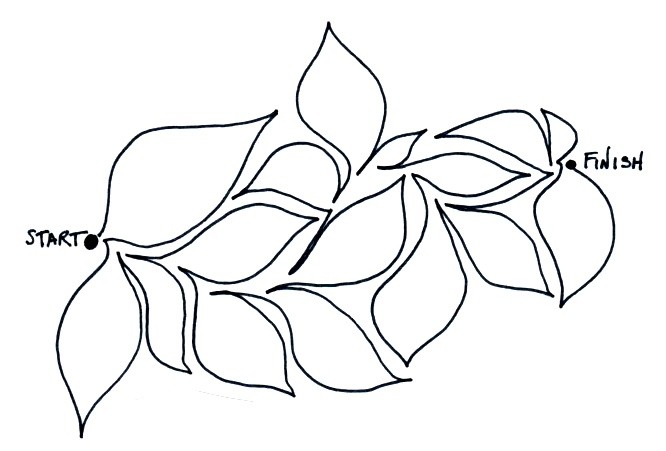
Another design I find useful looks a little bit like lines on a seismograph or rugged mountain peaks. It’s more directional than the flame shape, but the random peaks and valleys create a nice secondary texture on the surface of the quilt.

I also enjoy using a tight stipple design, although this is less forgiving if you get stuck in a corner with no easy way out. The shape I have in mind when working on this pattern is the shape of a single jigsaw puzzle piece.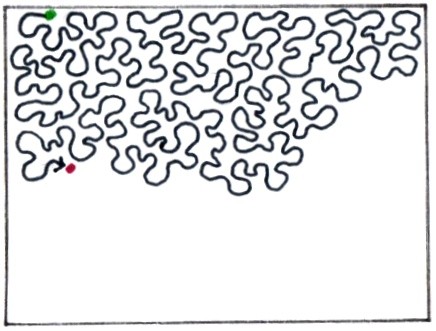
WILD-MOTION QUILTING
The best way to learn these patterns is to first use pen and paper. I draw squares, triangles, and oddly shaped quadrilaterals as frames and then fill them with the pattern I want to practice. By doing so, you embed the shape in your brain. Then when you’re ready to sit down at your machine with a fabric/batting sandwich on which to practice, you can take those images in your brain and replicate them through the needle.
The second step to learning these patterns is to practice, practice, practice. If you have 15 or 20 minutes, fill sheets of paper with these patterns and then sit down at the machine with a fabric/batting sandwich and draw them with your needle. Remember that this is just practice. It’s not a competition. And remember to BREATHE.
A fun way to practice these patterns is to try them out on my new Northcott collection. “Jewel Box by MJ Kinman” is arriving in shops early March. In addition to 12 swirled ombres, a stripe, and two backing patterns, the collection includes a panel of 12 birthstone gems. These ten-inch images are the perfect pillow-size. Sandwich them with batting and backing, practice your wild-motion quilting, and create a whole series of lovely throw pillows. I have created 6-spool thread packs for each Birthstone block. You can pick one or all six colors for your practice sessions.
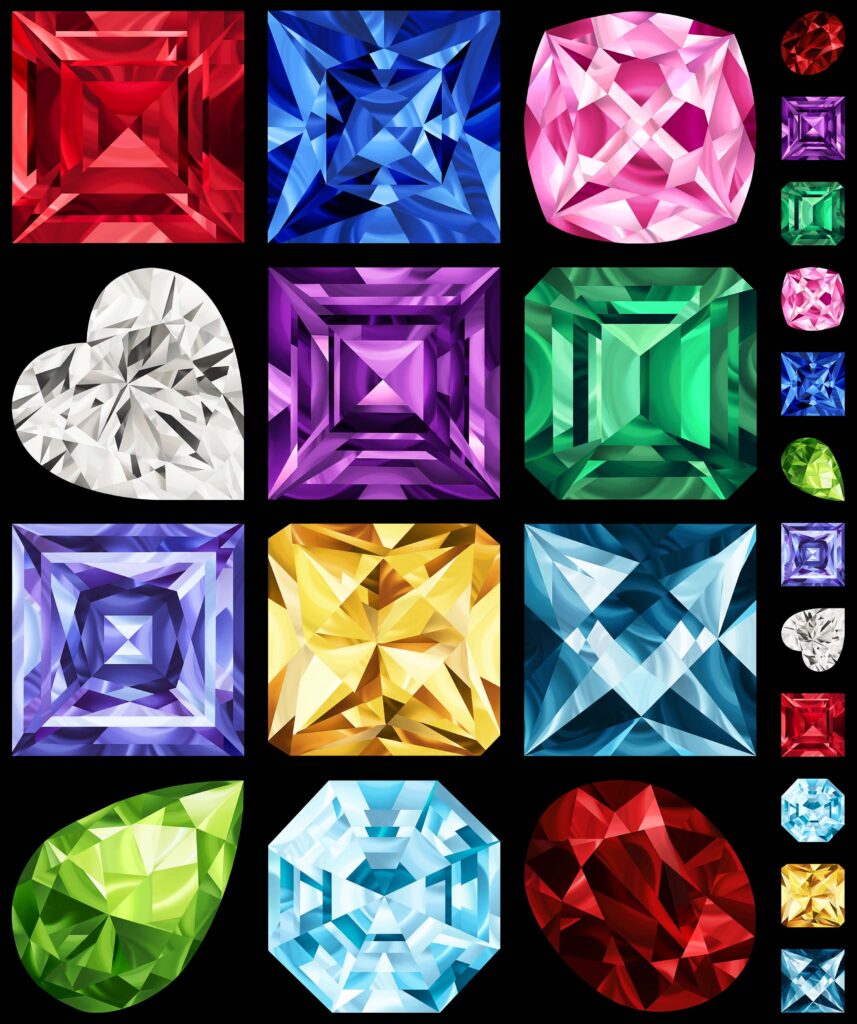
I wish you joy as you play with these new quilting patterns. Shine on!
~MJ
To learn more, look to our “Wild-Motion Quilting” and “Piecing & Quilting with MJ Kinman” webinars, offered on-demand and free to watch at your leisure.



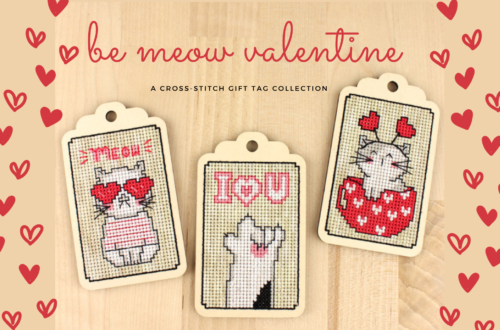


One Comment
MJ Kinman
Hi, Ellen! Thanks for posting this. I think today, while we are all staying safe inside, could be the perfect day for anyone who wants to practice these techniques to do so. A joyful way to use the time.
I want to note that the photo of “Eclipse 2020” was taken by Paul Rubin (eQuilter.com). Thanks, Paul, for the great shot! The other photos were taken by one of my photographers, Cliff Patrie.
Be well, everyone!